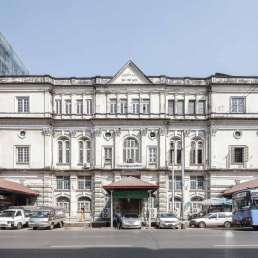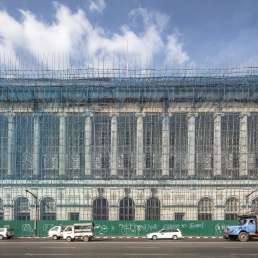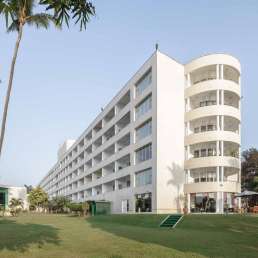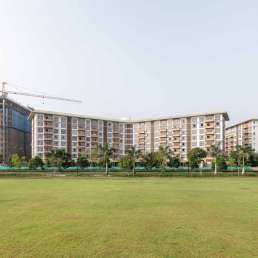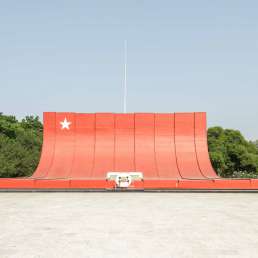Address: 339 Bogyoke Road
Year built: 1999
Architect: Nihon Sekkei, Inc.
The Sakura Tower is almost exclusively a Japanese affair, starting with the name. Financed by a Japanese investor, it was designed by Nihon Sekkei and built by Konoike, both Japanese firms. Mitsubishi and Hitachi elevators transport people up and down the 20 floors, and a large and lit Hitachi logo adorns the building’s slanted roof structure. In a nod to Japanese expertise, the tower is also earthquake-resistant. Its East Asian pagoda-like roof and recessed top floor are iconic in Yangon’s skyline.
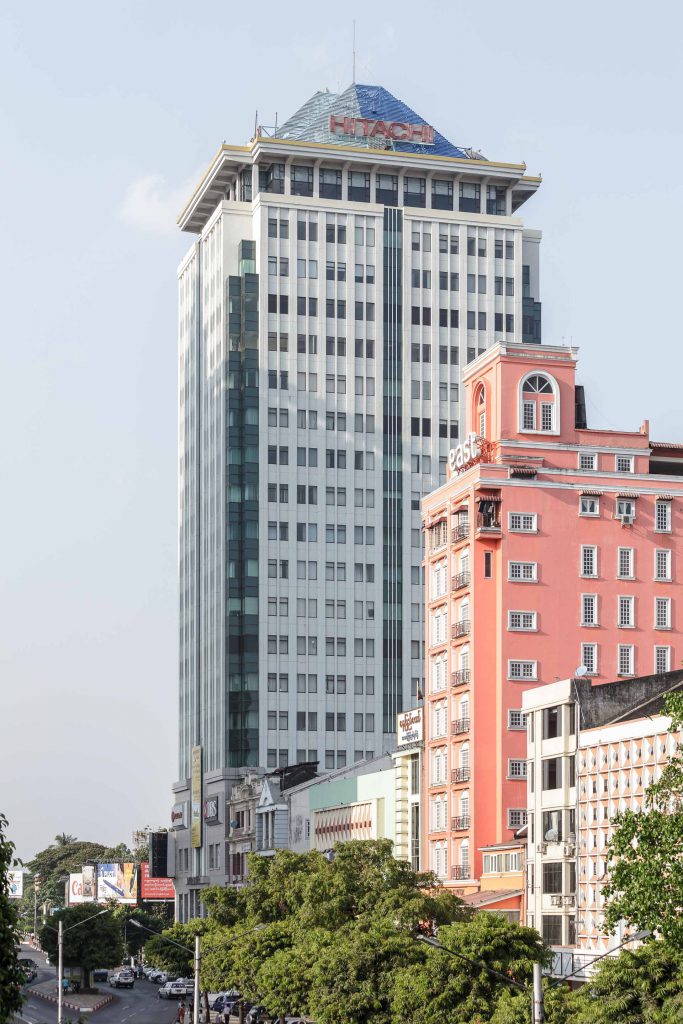
Built a few years after the Sule Shangri-La across the street, and like most 1990s real estate developments in Yangon, the Sakura Tower battled with high vacancy rates in its early years. In fact low demand for its office space meant the Sakura Tower had to mothball some of the upper floors. Quite the opposite is true today. The building is totally full and one of the few office spaces in Yangon up to international standards. (It has 24-hour generator electricity backup, no small luxury in a blackout-prone city.) Tenants include the Japanese aid agency, JICA, as well as Japanese companies such as Itochu Corporation, Mitsubishi Corporation and Sompo Japan Insurance. A restaurant on the 20th floor offers a breathtaking perspective of the city. This valuable space could do with a renovation, though. The slightly kitsch interior is one thing. It would also gain from adding an open-air balcony where customers could fully absorb the exceptional view.
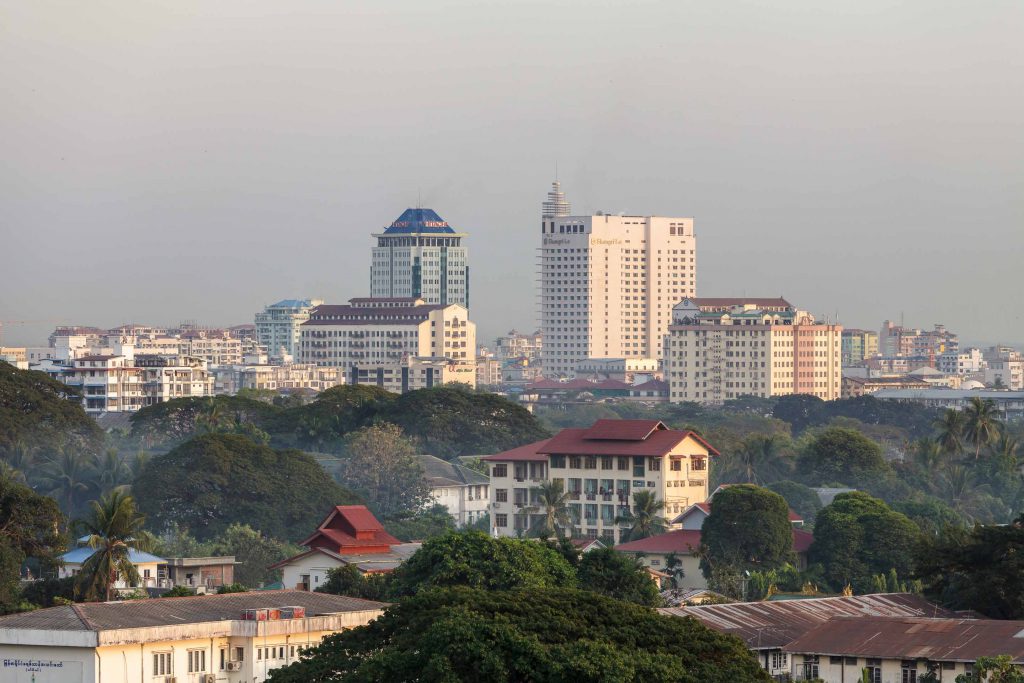
As mentioned elsewhere in this guide, this stretch of Bogyoke Road was once colonial Rangoon’s entertainment centre, “Cinema Row”, lined with many movie houses. The Sakura Tower replaced the Ritz cinema, also known as the Majestic. The only surviving cinema from the colonial period is the next-door Waziya on Bogyoke Road. The area hosts several more recent movie theatres, including the Nay Pyi Taw and Shae Saung cinemas down the street, on Sule Pagoda Road.
